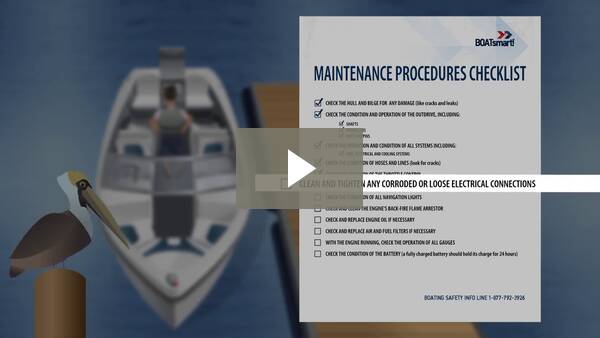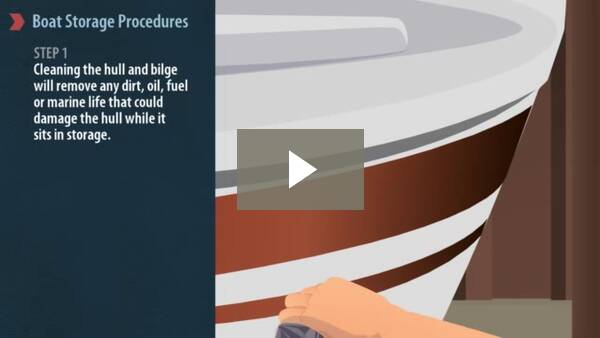Maintaining Your Boat
Don’t let a breakdown spoil a great day on the water. As a responsible boater, you must check and maintain your boat and its equipment on a regular basis. This practice will familiarize you with basic repairs and will help ensure the safety of everyone on the water.
Boat Maintenance Procedure Checklist:
- Check the hull and bilge for any damages (like cracks and leaks).
- Check the condition and operation of the outdrive, including:
- Shafts
- Propellers
- Nuts and pins.
- Check the operation and condition of all systems including:
- Fuel, electrical and cooling systems.
- Check the condition of hoses and lines (look for cracks).
- Check the condition of the throttle control.
- Clean and tighten any corroded or loose electrical connections.
- Check the condition of the navigation lights.
- Check and clean the engine’s back-fire flame arrestor.
- Check and replace the engine oil, if necessary.
- Check and replace the air and fuel filters, if necessary.
- With the engine running, check the operation of the gauges.
- Check the condition of the battery (a fully charged battery should hold its charge for 24 hours).
Why should you maintain your boat and it’s equipment? In the last few years, 8% of reported boating accidents and 4% of reported boating-related deaths in the USA involved factors linked to faulty boat equipment that had not been properly maintained.
Download a free BOATsmart! Boat Maintenance Checklist here!
Boat Storage
When preparing to winterize or place your boat in storage, read your owner’s manual for direction. Many boaters go to a marine dealer to have this service performed for them, but it can be done at home if you have the right equipment on hand. The following is an overview of your boat storage procedure:
Step 1) Empty the bilge of any excess water and clean the hull using environmentally friendly soap and water. Cleaning the hull and bilge will remove any dirt, oil, fuel or marine life that could damage the hull while it sits in storage.
Step 2) Drain and flush the engine cooling system.
Step 3) Fill the full tank.
Step 4) Clean (or replace) the fuel filter.
Step 5) Remove the spark plugs and fog the engine cylinders with a rust inhibitor.
Step 6) Lubricate all moving parts.
Note: If you’re unfamiliar with these kinds of maintenance procedures, take your boat to a marine dealer for service.




